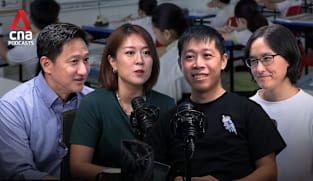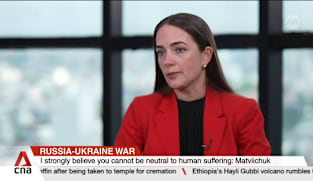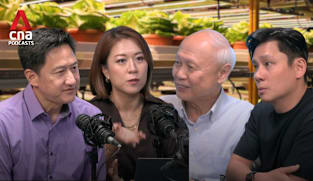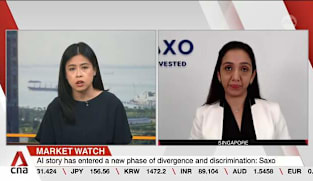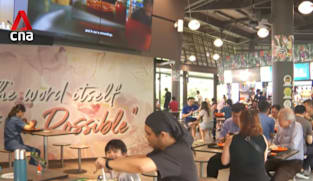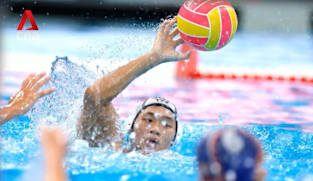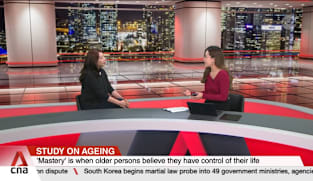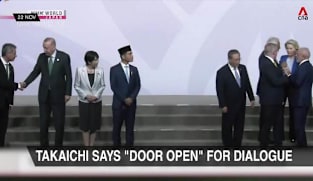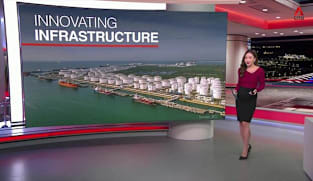Committee of Supply 2024 debate, Day 7: Edwin Tong on a vibrant and cohesive home where diverse dreams thrive
The Singapore Indoor Stadium (SIS) is part of the Sports Hub and is now more than 30 years old. Others around the region have refreshed their facilities, with new and modern indoor arenas that are state-of-the-art. “We believe that it is now an opportune time to develop a new indoor arena that will be among the best-in-class globally,” said Culture, Community and Youth Minister Edwin Tong. He told Parliament on Thursday (Mar 7) that after studying some of the best arenas in the world, the Government is considering an arena which can host more sophisticated events, flexibly accommodate different types of events and have a faster turnaround time between different types of events, as well as offer greater value to spectators, such as more varied hospitality suites, better seating and overall experience. This new arena will be located adjacent to the current SIS site to synergise with the rest of the Sports Hub and Kallang and to plan events and programming as an entire precinct. It will also allow the current SIS to operate until the new indoor arena is operational. This will minimise disruption to the pipeline of events and programming, which can continue throughout the construction period. Mr Tong said the Government is currently studying the capacity of this new indoor arena, taking into account existing and upcoming venues. It should at least have the same capacity as the current SIS and be “future-proofed” to serve Singapore’s interests. The new indoor arena will operate alongside the rest of the Sports Hub, offering synergies with the other sporting and community facilities at the Kallang Alive precinct and injecting vibrancy into the precinct, he added. Mr Tong said this is one way to drive interest and participation in sports and boost economic growth and global recognition - possibly unlocking latent potential in hosting entertainment and sporting events and strengthening Singapore’s reputation as a choice destination for high-signature international events. He also outlined efforts to enable young people to develop their passion for sports and broaden sporting participation in the community. This year, the People’s Association and SportSG will bring back the popular inter-constituency and inter-GRC community championship as part of Pesta Sukan, which means Festival of Sport. This community championship will focus on five popular sports - badminton, basketball, football, pickleball and table tennis. Teams will compete under their constituency, with a final round among the GRCs, to determine the national champion. Mr Tong said this will add some competitive spirit to community sports. There will also be more facilities close to where Singaporeans live. The Government is boosting an islandwide network of world-class sporting facilities, such as the Toa Payoh Integrated Development, which will have top-notch facilities to cater to a range of activities for athletes and heartlanders. More of such developments are coming to the heartlands, in areas like Punggol, Clementi, Queenstown, Ang Mo Kio and Hougang. To support Singaporeans who are interested in a broader range of diverse sports, the Government will extend the One Team Singapore Fund to 2027 and do more for emerging sports that are gaining traction. Turning to efforts to groom talents for high-performance sports, Mr Tong stressed the need to put them through structured development pathways with comprehensive support. From April 2024, the spexPotential programme will support more youth athletes making the transition to the senior level. Mr Tong said the spexScholarship has been very successful but the bar can be high - often benchmarked at Asian Games medal potential. The new spexPotential programme bridges this gap and offers more support at an earlier stage. SpexPotential will provide financial and programmatic support, such as coaching, overseas training in competition, local training, sports science and sports medicine and equipment. Turning to the arts and culture sector, Mr Tong said the National Arts Council will do more to support the development of multiple pathways of training for arts practitioners. They can look forward to a wider range of development opportunities curated to fit their training needs and nature of work. An injection of S$100 million to the arts sector over the next four years will support the ambitions of Singapore’s Arts Plan. Mr Tong stressed that his ministry is committed to building a vibrant and cohesive home where diverse dreams thrive. “There is no one Singapore dream, no uniform pathway for success. What matters is that we live in a society that values our diverse passions and aspirations and that there are opportunities for us to achieve our fullest potential. And through ups and downs, we know that our fellow Singaporeans will be there to inspire us, lift us up when we need to, give us the boost we need to cross the finish line,” he said.
The Singapore Indoor Stadium (SIS) is part of the Sports Hub and is now more than 30 years old. Others around the region have refreshed their facilities, with new and modern indoor arenas that are state-of-the-art. “We believe that it is now an opportune time to develop a new indoor arena that will be among the best-in-class globally,” said Culture, Community and Youth Minister Edwin Tong. He told Parliament on Thursday (Mar 7) that after studying some of the best arenas in the world, the Government is considering an arena which can host more sophisticated events, flexibly accommodate different types of events and have a faster turnaround time between different types of events, as well as offer greater value to spectators, such as more varied hospitality suites, better seating and overall experience. This new arena will be located adjacent to the current SIS site to synergise with the rest of the Sports Hub and Kallang and to plan events and programming as an entire precinct. It will also allow the current SIS to operate until the new indoor arena is operational. This will minimise disruption to the pipeline of events and programming, which can continue throughout the construction period. Mr Tong said the Government is currently studying the capacity of this new indoor arena, taking into account existing and upcoming venues. It should at least have the same capacity as the current SIS and be “future-proofed” to serve Singapore’s interests. The new indoor arena will operate alongside the rest of the Sports Hub, offering synergies with the other sporting and community facilities at the Kallang Alive precinct and injecting vibrancy into the precinct, he added. Mr Tong said this is one way to drive interest and participation in sports and boost economic growth and global recognition - possibly unlocking latent potential in hosting entertainment and sporting events and strengthening Singapore’s reputation as a choice destination for high-signature international events. He also outlined efforts to enable young people to develop their passion for sports and broaden sporting participation in the community. This year, the People’s Association and SportSG will bring back the popular inter-constituency and inter-GRC community championship as part of Pesta Sukan, which means Festival of Sport. This community championship will focus on five popular sports - badminton, basketball, football, pickleball and table tennis. Teams will compete under their constituency, with a final round among the GRCs, to determine the national champion. Mr Tong said this will add some competitive spirit to community sports. There will also be more facilities close to where Singaporeans live. The Government is boosting an islandwide network of world-class sporting facilities, such as the Toa Payoh Integrated Development, which will have top-notch facilities to cater to a range of activities for athletes and heartlanders. More of such developments are coming to the heartlands, in areas like Punggol, Clementi, Queenstown, Ang Mo Kio and Hougang. To support Singaporeans who are interested in a broader range of diverse sports, the Government will extend the One Team Singapore Fund to 2027 and do more for emerging sports that are gaining traction. Turning to efforts to groom talents for high-performance sports, Mr Tong stressed the need to put them through structured development pathways with comprehensive support. From April 2024, the spexPotential programme will support more youth athletes making the transition to the senior level. Mr Tong said the spexScholarship has been very successful but the bar can be high - often benchmarked at Asian Games medal potential. The new spexPotential programme bridges this gap and offers more support at an earlier stage. SpexPotential will provide financial and programmatic support, such as coaching, overseas training in competition, local training, sports science and sports medicine and equipment. Turning to the arts and culture sector, Mr Tong said the National Arts Council will do more to support the development of multiple pathways of training for arts practitioners. They can look forward to a wider range of development opportunities curated to fit their training needs and nature of work. An injection of S$100 million to the arts sector over the next four years will support the ambitions of Singapore’s Arts Plan. Mr Tong stressed that his ministry is committed to building a vibrant and cohesive home where diverse dreams thrive. “There is no one Singapore dream, no uniform pathway for success. What matters is that we live in a society that values our diverse passions and aspirations and that there are opportunities for us to achieve our fullest potential. And through ups and downs, we know that our fellow Singaporeans will be there to inspire us, lift us up when we need to, give us the boost we need to cross the finish line,” he said.








